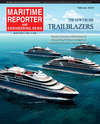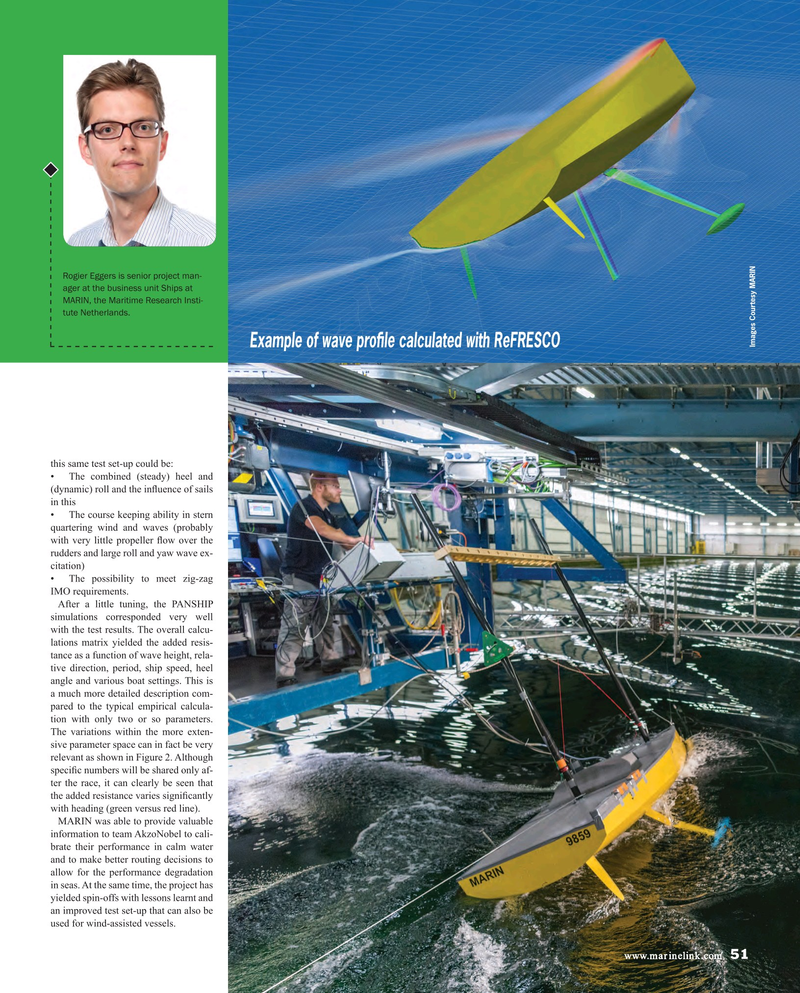
Page 51: of Maritime Reporter Magazine (February 2018)
Cruise Ship Annual
Read this page in Pdf, Flash or Html5 edition of February 2018 Maritime Reporter Magazine
About the Author
Rogier Eggers is senior project man- ager at the business unit Ships at
MARIN, the Maritime Research Insti- tute Netherlands. e: [email protected]
Images Courtesy MARIN
Example of wave pro? le calculated with ReFRESCO this same test set-up could be: • The combined (steady) heel and (dynamic) roll and the in? uence of sails in this • The course keeping ability in stern quartering wind and waves (probably with very little propeller ? ow over the rudders and large roll and yaw wave ex- citation) • The possibility to meet zig-zag
IMO requirements.
After a little tuning, the PANSHIP simulations corresponded very well with the test results. The overall calcu- lations matrix yielded the added resis- tance as a function of wave height, rela- tive direction, period, ship speed, heel angle and various boat settings. This is a much more detailed description com- pared to the typical empirical calcula- tion with only two or so parameters.
The variations within the more exten- sive parameter space can in fact be very relevant as shown in Figure 2. Although speci? c numbers will be shared only af- ter the race, it can clearly be seen that the added resistance varies signi? cantly with heading (green versus red line).
MARIN was able to provide valuable information to team AkzoNobel to cali- brate their performance in calm water and to make better routing decisions to allow for the performance degradation in seas. At the same time, the project has yielded spin-offs with lessons learnt and an improved test set-up that can also be used for wind-assisted vessels.
www.marinelink.com 51
MR #2 (50-57).indd 51 MR #2 (50-57).indd 51 2/8/2018 9:59:13 AM2/8/2018 9:59:13 AM

 50
50

 52
52
